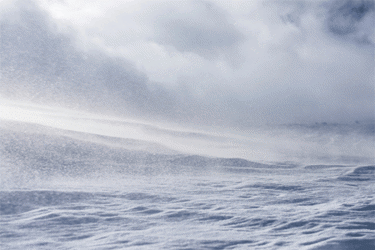Colorado's Vanishing Snow Is Becoming A Crucial Water Management Issue


As the U.S. West struggles in the face of mounting drought, every ounce of potential water supply is becoming critical. In Colorado, that has driven a new focus on accounting for plumes of snow that seem to disappear from the mountains and into thin air.
“In the East River watershed, located along the high reaches of the Colorado River Basin, a group of researchers at Gothic’s Rocky Mountain Biological Laboratory (RMBL) is trying to solve the mystery by focusing on a process called sublimation,” The Atlantic reported. “Snow in the high country sometimes skips the liquid phase entirely, turning straight from a solid into a vapor. The phenomenon may be responsible for anywhere from 10 to 90 percent of snow loss.”
In a state that seems to be exploring every water conservation method available, such snow loss can pose a real problem for water managers who are trying to make every drop count. But getting a clear handle on how much snow is vaporizing is no easy task, and scientists have deployed a legion of research methods to figure it out.
“To observe what happens to snow as it falls and piles up on the ground, scientists set up [a] field site near the Rocky Mountain Biological Laboratory outside of Crested Butte, Colorado,” according to the National Center For Atmospheric Research. “The site consisted of four towers, 10-20 meters high, loaded with a variety of instruments that collected data on wind speed, snowfall, and blowing snow. This enabled the scientists to measure the depth of the snowpack, temperature of the snowpack surface, and intensity of the sun.”
Some early findings from the research have demonstrated that blowing snow is being sublimated higher above the rest of the snowpack than researchers knew. It’s also clear that the brighter the sun and the higher the wind, the more sublimation will occur.
But with many mysteries remaining and water supplies in the region becoming more precious than ever, the researchers are eager to continue digging through the data and arriving at conclusions that might help nearby reservoirs stay full.
“They hope the information will one day give water managers a better understanding of how much sublimation eats into the region’s water budget — helping them make more accurate predictions for what is likely to be an even hotter, and drier, future,” per The Atlantic.
To read more about how water systems in the West are adapting to ongoing drought, visit Water Online’s Water Scarcity Solutions Center.
